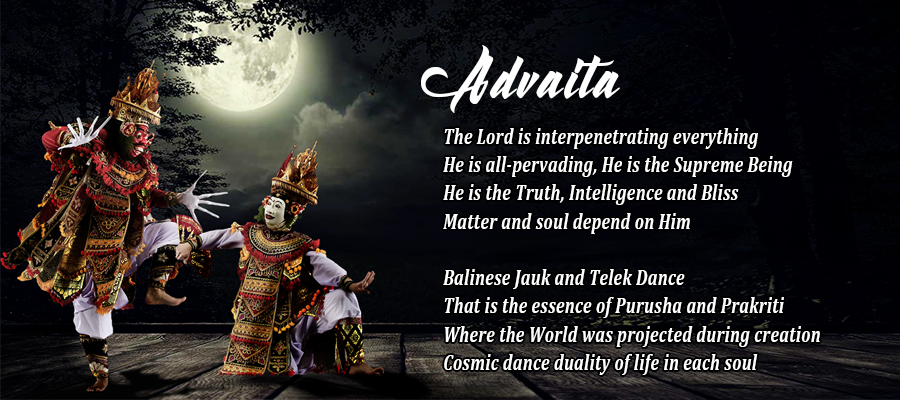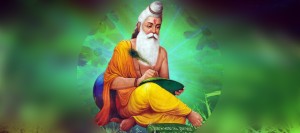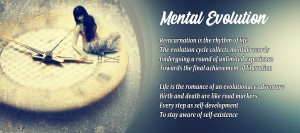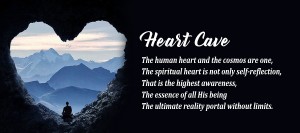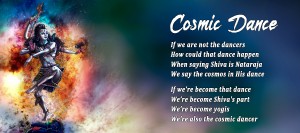- 1RELATIVE REALITY
- 1.1NATURE OF THE JIVA AND THE MEANS TO MOKSHA
- 1.2ADVAITA
- 2THE SOUL — A DISTINCT INDIVIDUAL ENTITY
- 3PRAKRITI, THE MATERIAL CAUSE OF THE WORLD
- 3.1The Four Forms of the Ultimate Reality
- 4RELATION BETWEEN THE INDIVIDUAL SOUL AND THE SUPREME SOUL
- 5THE JIVA AND ITS ATTRIBUTES
- 6SIVA, SAKTI AND MAYA
- 6.1Sakti The Ruler of Maya
- 7MANIFESTATIONS OF THE DIVINE MOTHER
- 7.1THE MOTHER THAT PROTECTS
- 7.2AKTAISM, A UNIVERSAL CULT
Brahman is not an object, as It is Adrisya, beyond the reach of the eyes. Hence the Upanishads declare: “Neti Neti not this, not this, not that.” This does not mean that Brahman is a negative concept, or a metaphysical abstraction, or a nonentity, or avoid. It is not another. It is all-full, infinite, changeless, self-existent, self-delight, self-knowledge and self-bliss. It is Svarupa, essence. It is the essence of the knower. It is the Seer (Drashta), Transcendent (Turiya) and Silent Witness (Sakshi).
Sankara’s Supreme Brahman is impersonal, Nirguna (without Gunas or attributes), Nirakara (formless), Nirvisesha (without special characteristics), immutable, eternal and Akarta (non-agent). It is above all needs and desires. It is always the Witnessing Subject. It can never become an object It is beyond the reach of the senses. Brahman is non-dual, one without a second. It has no other beside It. It is destitute of difference, either external or internal. Brahman cannot be described, because description implies a distinction. Brahman cannot be distinguished from any other than It. In Brahman, there is not the distinction of substance and attribute.
Sat-Chit-Ananda constitutes the very essence or Svarupa of Brahman, and not just Its attributes. The Nirguna Brahman of Sankara is impersonal. It becomes a personal God or Saguna Brahman only through Its association with Maya.
Saguna Brahman and Nirguna Brahman are not two different Brahmans. Nirguna Brahman is not the contrast, antithesis or opposite of Saguna Brahman. The same Nirguna Brahman appears as Saguna Brahman for the pious worship of devotees. It is the same Truth from two different points of view.
Nirguna Brahman is the higher Brahman, the Brahman from the transcendental viewpoint (Paramarthika); Saguna Brahman is the lower Brahman, the Brahman from the relative viewpoint (Vyavaharika).
RELATIVE REALITY
The world is not an illusion according to Sankara. The world is relatively real (Vyavaharika Satta), while Brahman is absolutely real (Paramarthika Satta). The world is the product of Maya or Avidya. The unchanging Brahman appears as the changing world through Maya. Maya is a mysterious indescribable power of the Lord which hides the real and manifests itself as the unreal: Maya is not real, because it vanishes when you attain knowledge of the Eternal. It is not unreal also, because it exists till knowledge dawns in you. The superimposition of the world on Brahman is due to Avidya or ignorance.
NATURE OF THE JIVA AND THE MEANS TO MOKSHA
To Sankara, the Jiva or the individual soul is only relatively real. Its individuality lasts only so long as it is subject to unreal Upadhis or limiting conditions due to Avidya. The Jiva identifies itself with the body, mind and the senses when it is deluded by Avidya or ignorance. It thinks it acts and enjoys, on account of Avidya. In reality, it is not different from Brahman or the Absolute.
The Upanishads declare emphatically: “Tat Tvam Asi—That Thou Art.” Just as the bubble becomes one with the ocean when it bursts, just as the pot-ether becomes one with the universal ether when the pot is broken, so also the Jiva or the empirical self becomes one with Brahman when it gets knowledge of Brahman. When knowledge dawns in it through annihilation of Avidya, it is freed from its individuality and finitude and realizes its essential Satchidananda nature. It merges itself in the ocean of bliss. The river of life joins the ocean of existence. This is the Truth.
The release from Samsara means, according to Sankara, the absolute merging of the individual soul in Brahman due to a dismissal of the erroneous notion that the soul is distinct from Brahman. According to Sankara, Karma and Bhakti are means to Jnana which is Moksha.
ADVAITA
The Advaita philosophy of Sri Sankaracharya (Avatara of Lord Siva) is lofty, sublime and unique. It is a system of bold philosophy and logical subtlety. It is highly interesting, inspiring and elevating. No other philosophy can stand before it in boldness, depth and subtle thinking. Sankara’s philosophy is complete and perfect.
His philosophy has brought solace, peace and illumination to countless persons in the East and the West. The Western thinkers bow their heads at the lotus-feet of Sri Sankara. His philosophy has soothed the sorrows and afflictions of the most forlorn persons and brought hope, joy, wisdom, perfection, freedom and calmness to many. His system of philosophy commands the admiration of the whole world.
According to Sri Sankara, all qualities or manifestations are unreal and temporary. They are a result of Avidya or ignorance. But, they are subject to the control of the one Brahman. God can be one despite the existence of attributes because they cannot exist alone; they are not independent entities. They are Prakaras or the modes, Sesha or the accessories, and Niyama or the controlled aspects, of the one Brahman.
THE SOUL — A DISTINCT INDIVIDUAL ENTITY
There are three classes of souls, Nitya (eternal), Mukta (free) and Baddha (bound). The eternal souls have never been in bondage. They are eternally free. They live with God in Vaikuntha. The freed souls were once subject to Samsara, but have attained salvation now and live with God. The bound souls are caught up in the meshes of Samsara and are striving to be released. They wander from life to life until they are redeemed. Man or the individual soul is a particle of which God is the whole. The individual soul is like a spark of that mass of fire.
When the individual soul is immersed in worldliness or Samsara, its knowledge is contracted. It gets its body according to its past Karma, and goes from birth to death and from death to birth, till it attains Moksha or the final emancipation. When it attains Moksha, its knowledge expands.
The soul is marching on in this Samsara, expanding or contracting through its good and evil actions, till it attains the final emancipation through the grace of Lord. The grace descends on those souls who are pure and struggling for the divine grace.
Moksha means the soul’s passing from the troubles of mundane life into a kind of heaven or paradise (Vaikuntha) where it will remain forever in undisturbed personal bliss in the presence of God. The liberated soul attains to the nature of God. It never becomes identical with Him. It lives in fellowship with the Lord, either serving Him or meditating on Him. It never loses its individuality. There is no such thing as Jivanmukti, Salvation comes when the soul leaves the body.
The final emancipation can be obtained only through Bhakti and the grace of the Lord. Thegrace of the Lord comes through devotion and Prapatti or absolute self-surrender. Karma and Jnana are only means to Bhakti.
PRAKRITI, THE MATERIAL CAUSE OF THE WORLD
God is efficient but not the material, cause of the world, because Prakriti which is the world-stuff is different from Him. Prakriti is the material cause of the world. It evolves into the visible world. All the objects, bodies, and organs of the souls are made out of Prakriti. God Siva energizes Prakriti through Parwati. Then there is creation.
The three aspects of Prakriti are presided over by the three Powers: Lakshmi, Bhu and Durga. Avidya is a form of Prakriti. It obscures the spiritual powers of the individual soul. It forms a veil which hides the Supreme from the vision of the individual soul.
Mahat, Ahankara (egoism), Buddhi, mind, the ten senses, the five sense-objects, and the five great elements are the modifications of Prakriti. These exist in the primordial Prakriti in subtle forms before their evolution.
There is a plurality of Jivas. They are all of the atomic sizes. The entire universe is filled with Jivas or individual souls. Every atom of space is filled up with Jivas. Madhva says in his ‘Tattvanirnaya’:
“Infinite are the souls dwelling in an atom of space.” No two Jivas are alike in character. They are essentially different from one another. There are different grades amongst them even in their enjoyment of bliss after salvation.
The Four Forms of the Ultimate Reality
The Ultimate Reality exists in four forms. In Its primary form, It is the unconditioned, immutable, Supreme Brahman. In Its second form, It is Isvara, the Lord of the Universe. In the third form, It is called Jiva or the individual soul. In Its fourth form, It is manifested as the universe of names and forms.
The phenomenal universe is a part of Brahman. It has no existence separate from, and independent of Brahman. The relation between the world and Brahman is also one of Bhedabheda. The universe is not different from Brahman.
RELATION BETWEEN THE INDIVIDUAL SOUL AND THE SUPREME SOUL
The individual soul is a part of the Supreme Soul. It is also identical with, or the same as, the Supreme Soul. Just as a wave is both different from the ocean (being only a part of the ocean), and identical with it (both being water), so also is the individual soul both different from (being a part of the Supreme Soul), and identical with (both being of the nature of Chaitanya or Consciousness), the Supreme Soul.
The relation between the individual soul or Jiva and the Supreme Soul or Brahman is one of formal difference and essential identity. There is no difference between Jiva and Brahman in kind. The difference is only in degree.
The Jiva is different from Brahman with reference to the phenomenal aspect or the body-idea. It is identical with, or the same as, Brahman with reference to the noumenal aspect as the indivisible whole. This is what is called Bhedabheda.
A strong wind perturbs the sea and a wave is formed. The wave is different from the ocean, though it is a part of it. The wind passes away and the wave subsides. Now it cannot be distinguished from the sea. Even so, the mind is agitated by desires and cravings. It runs towards the objects along with the senses and becomes conscious of distinctive individuality.
The ego or the finite self beholds the relative world with its phenomena and gets experiences. When the mind becomes calm and serene by eradication of desires, it ceases to function and all the Vrittis or waves subside. The phenomenal world vanishes and the finite self realizes the Infinite Self or Brahman.
THE JIVA AND ITS ATTRIBUTES
Souls are infinite in number and are atomic in size. The Jiva is minute (Anu). It is of the form of knowledge (Jnanasvarupa), though not in the sense of Sankara. The Jiva is knowledge and it is the possessor of knowledge also, just as the sun is light and the source of light also.
The relation of the soul to its attribute is like that of the Dharmin (the qualified) to the Dharma (the attribute). It is one of difference and non-difference (Bhedabheda).
Though the Jiva is atomic in size, it experiences the pleasures and pains throughout the body owing to its omnipresent quality of knowledge. It is everlasting. It continues to exist in deep sleep and the final state of emancipation. In Pralaya or dissolution, the individual souls and the world merge in the Lord in subtle form. Births and deaths concern the body, but not the Self.
The individual soul is the agent of activity (Karta). It has no independent knowledge or activity. The individual souls and the world are not self-sufficient. They are guided by the Lord. They are all sustained and governed by God. Each soul is a ray of Brahman individualized. Ananda or bliss belongs to the individual soul in all its states.
Jivas are of two classes: (i) Jivas who have knowledge of the all-pervading indwelling spirit and who have realized that the appearances are non-separate from Brahman. They are called liberated souls (Mukta). They are free from ignorance. (ii) Jivas who only behold the appearances, but have no knowledge of the all-pervading indwelling spirit, the support of these names and forms. They are called bound souls (Baddha).
SIVA, SAKTI AND MAYA
The Lord Siva pervades the whole world by His Sakti. He works through His Sakti. Sakti is the conscious energy of Lord Siva. She is the very body of Lord Siva. The potter is the first cause for the pot. The stick and the wheel are the instrumental causes. The clay is the material cause of the pot. Similarly, Lord Siva is the first cause of the world. Sakti is the instrumental cause. Maya is the material cause.
Sakti is not the material cause of the universe, because she is of the nature of consciousness (Chaitanya). Siva is pure consciousness, but the matter is pure unconsciousness. Sakti is the intermediate link between the two.
Sakti is the reflex of Siva. It has no independent existence. Siva assumes this form out of His great love for mankind. Siva wishes that all should know Him.
Sakti The Ruler of Maya
Maya or Prakriti is within the womb of Sakti. Maya is the matrix of the world. Maya is potential in the state of dissolution. She is dynamic in creation. Maya evolves into several material elements and other physical parts of all sentient creatures, under the direction of Sakti.
The power or active aspect of the immanent God is Sakti. Siva or Brahman is the unchanging consciousness. Sakti is His changing Power which appears as mind and matter. Sakti is the embodiment of power. She runs this world-show.
She maintains the sportive play or Lila of the Lord. She is the supporter of the vast universe.
She is the supreme power by which the world is upheld. She is the Universal Mother. She is Durga, Lakshmi, Sarasvati, Kali, Chandi, Chamundi, Tripurasundari and Rajarajesvari. She is Lalita, Kundalini and Parvati.
There is no difference between God and His Sakti, just as there is no difference between fire and its burning power.
Devi is Sakti of Lord Siva. She is Jada Sakti and Chit Sakti. Prakriti is Jada Sakti. Suddha Maya is Chit Sakti. Nada, Bindu and the rest are only names for different aspects of Sakti. Sakti is Prakriti, Maya, Mahamaya and Sri Vidya. Sakti is Brahman Itself. Sakti manifested Herself to Lord Siva in the ten forms as the Dasa-Maha-Vidyas, viz., Kali, Bagalamukhi, Chhinnamasta, Bhuvanesvari, Matangi, Shodasi, Dhumavati, Tripurasundari, Tara and Bhairavi.
Sakti is Chidrupini. She is pure, blissful Consciousness. She is the Mother of Nature. She is Nature Itself. She is Jagat-Janani, Creatrix of the world; Mahishasura-mardini, destroyer of Mahishasura; Bhrantinasini, destroyer of illusion or Avidya; and Daridryanasini, destroyer of poverty.
The world is a manifestation of Sakti. The countless universes are only dust of Divine Mother’s holy feet. Her glory is ineffable. Her splendor is indescribable. Her greatness is unfathomable. She showers Her grace on Her sincere devotees. She leads the individual soul from Chakra to Chakra, from plane to plane, and unites him with Lord Siva in the Sahasrara.
MANIFESTATIONS OF THE DIVINE MOTHER
The Supreme Lord is represented as Siva and His power is represented as His consort Sakti, Durga or Kali. Just as the husband and wife look after the well-being of the family, so also Lord Siva and His Sakti are engaged in looking after the affairs of this world.
Divine Mother is everywhere triple. She is endowed with the three Gunas, viz., Sattva, Rajas and Tamas. She manifests Herself as Will (Ichha Sakti), Action (Kriya Sakti) and Knowledge (Jnana Sakti). She is Brahma-Sakti (Sarasvati) in conjunction with Brahma, Vishnu-Sakti (Lakshmi) in conjunction with Vishnu and Siva-Sakti (Gauri) in conjunction with Siva. Hence She is called Tripurasundari.
The abode of Tripurasundari, the Divine Mother, is called Sri-Nagara. This magnificent abode known as Mani-Dvipa, is surrounded by twenty-five ramparts which represent the twenty-five Tattvas. The resplendent Chintamani Palace is in the middle. The Divine Mother sits in the Bindu-Pitha in Sri-Chakra in that wonderful palace. There is a similar abode for Her in the body of man also.
The body is Sakti. The needs of the body are the needs of Sakti. When a man enjoys, it is Sakti who enjoys through him. She sees through his eyes, works through his hands and hears through his ears. Body, mind, Prana, egoism, intellect, organs, and all functions are Her manifestations.
The whole world is Her body. Mountains are Her bones. Rivers are Her veins. The ocean is Her bladder. Sun and moon are Her eyes. The wind is Her breath. Agni is Her mouth.
THE MOTHER THAT PROTECTS
Sakti may be termed as that by which we live and have our being in this universe. In this world, all the wants of the child are provided by the mother. The child’s growth, development and sustenance are looked after by the mother. Even so, all the necessities of life, life’s activities in this world and the energy needed for it, depend upon Sakti or the Universal Mother.
The first syllable which a child or a quadruped utters is the name of the beloved mother. Is there any child who does not owe its all to the affection and love of its mother? It is the mother who protects you, consoles you, cheers you and nurses you. She is your friend, philosopher, preceptor and guide throughout your life. The human mother is a manifestation of the Universal Mother. All women are forms of the Divine Mother.
AKTAISM, A UNIVERSAL CULT
He who worships Sakti, that is, God in Mother-form, as the Supreme Power which creates, sustains and withdraws the universe, is a Sakta.
Worship of Sakti, or Saktaism, is one of the oldest and most widespread religions in the world. Everybody in this world wants power and loves to possess power. He is elated by power. He wants to domineer over others through power. War is the outcome of greed for power. Scientists are followers of Saktaism. He who wishes to develop will-power and a charming personality is a follower of Saktaism. In reality, every man in this world is a follower of Saktaism.
Scientists say now that everything is energy only, and that energy is the physical ultimate of all forms of matter. The followers of the Sakta school of philosophy have said the same thing long ago. They further say that this energy is only a limited manifestation of the infinite Supreme Power or Maha Sakti.

